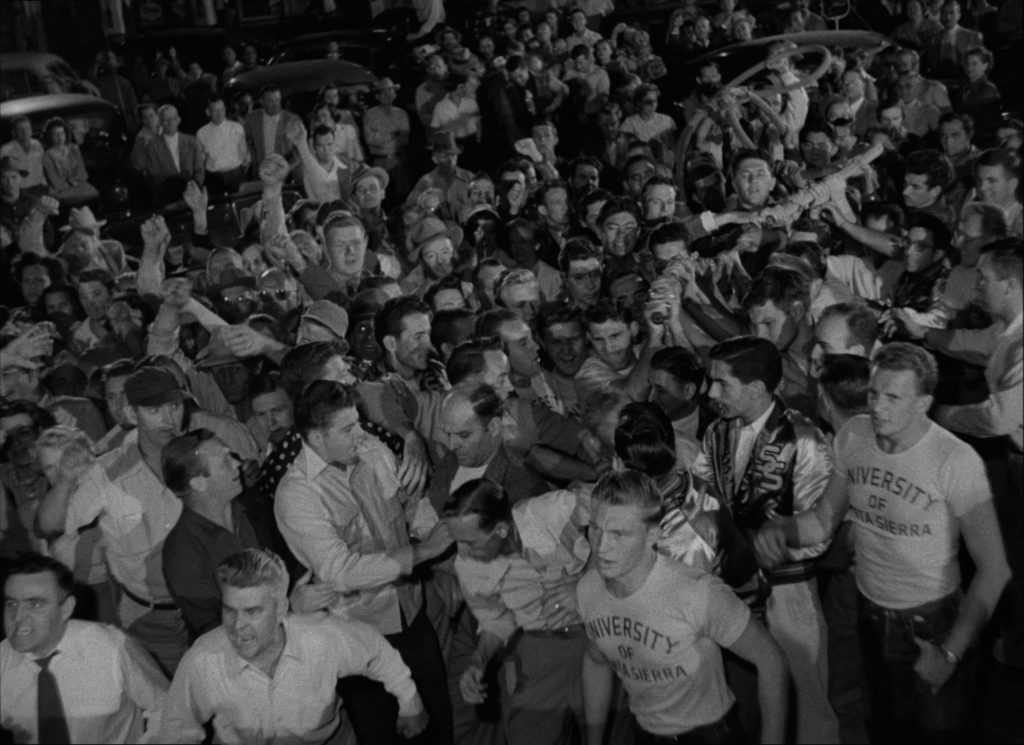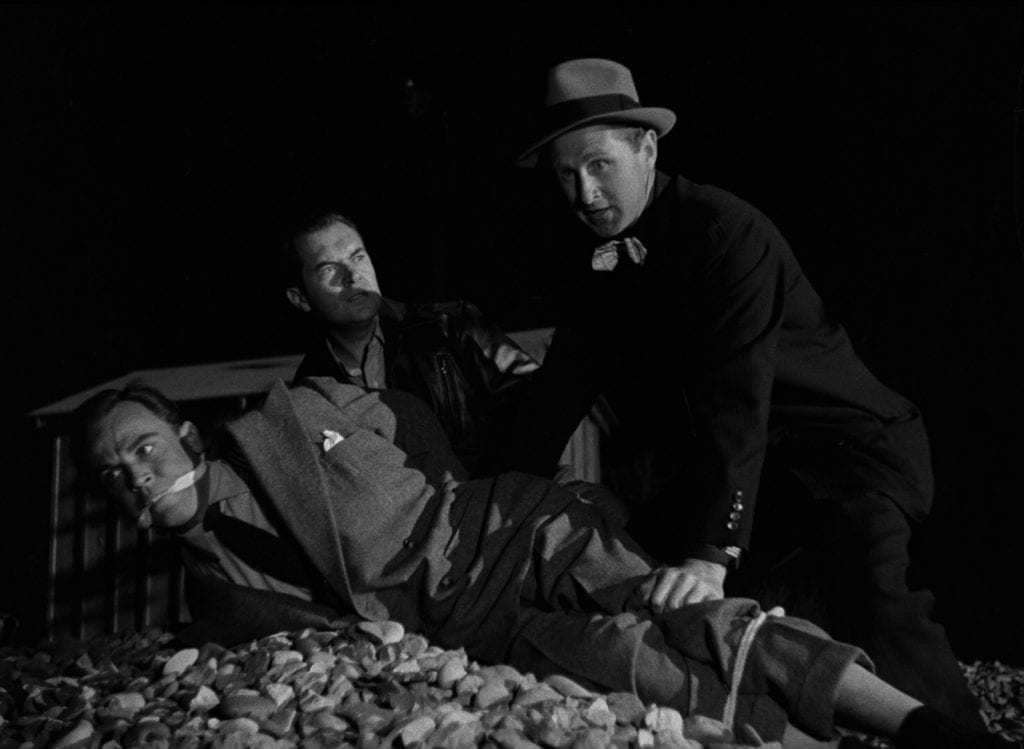The Sound of Fury has had a hard time gaining the attention it deserves.
Considered a flop on its initial release in 1950, it was later rebranded Try and Get Me with a poster focussing on deranged criminal Jerry (Lloyd Bridges) and a long-legged blonde—neither of which are the real focus of the film. From this we might expect a thrilling noir, oozing with sex and violence. What we get is an entirely different picture, one belonging to what critic Thom Andersen has identified as ‘film gris’: a subgenre of film noirs with explicitly left-wing sentiments. The Sound of Fury deserves our attention now more so than ever for the way it depicts a social reality we could still call our own.
The film follows Howard (Frank Lovejoy), a committed family man desperate for work. His situation is dire, as his wife is expecting a newborn and they cannot afford a doctor. In his desperation Howard falls in with Jerry, a small-time thief who holds up gas stations. When the two end up behind bars, local journalist Gil Stanton (Richard Carlson) uses his column to stir the public up into a frenzy, culminating in a lynch mob taking justice into their own hands. The film has deep historical resonance both with the past and our present. The story was inspired by a kidnapping and subsequent lynching which took place in San Jose 1933. Viewers in 2020 might be struck by the film’s critique of the media’s social influence and mob violence.

One of the best aspects of the film is Frank Lovejoy’s performance as Howard. On screen, Lovejoy was able to convincingly portray men bordering conventional society and the illicit world hidden from view. He did this within the much-revered In a Lonely Place, alongside Humphrey Bogart, where he played a police detective investigating a crime for which his friend is the prime suspect. He played a similar role in I Was a Communist for the FBI, a more ludicrous picture in which Lovejoy plays a double agent tasked with infiltrating the American communist party. In that film, Lovejoy’s character is alienated from his family and friends who think he is a ‘slimy Red’, when he is in fact as patriotic as they come. Lovejoy played respectable men, savvy to the evils lurking within the darkness.
His character in The Sound of Fury is much more pathetic, but still occupies this liminal state. Howard believes in the American dream to failure. The family, the house, the white picket fence; Howard wants nothing more than the material realisation of that dream and searches endlessly for a job to provide it. The irony is Howard’s desperation leaves him open to corruption and Lovejoy does a brilliant job of depicting a character pushed to psychological rupture.
For all the interest in Howard’s mental state, the film is not as stylised as other noirs. The film embraces a more realist register, particularly in the opening scenes where we see Howard walk through his run-down neighbourhood. This is part of the appeal in a film which derives the source of violence not in interior psychosis but in outward circumstances.
There is one notable exception to this where the camera takes on a more subjective role. Partway through the film, Jerry drags Howard to a nightclub as a front for their criminal activity. The situation makes Howard uncomfortable and his unease is evoked through the tilted camera. At one point a magician picks on Howard as his ‘volunteer’ and proceeds to pull items out of his breast pocket. A handful of silverware, a sting of sausage links; the magician seems to conjure up items which call to Howard’s mind the murder he is a party to. The sequence becomes more overtly surreal when Howard shakes the magician’s hand, only for magician’s arm to fall off. The film’s director, Cy Endfield, was himself an accomplished—and now much revered—magician, so it’s perhaps unsurprising that a magician should appear to manifest Howard’s guilt into view for a crowd.

The later moments of the film are dominated by Gil and the effect his column has on the populace. This section might have been influenced by the Hollywood Blacklist, where supposed communists were called to face testimony. Endfield himself was called to testify in front of the House Un-American Activities Committee (HUAC) shortly after The Sound of Fury was released (he chose to escape to England and never returned). One major flaw of the film is the moralising of Gil’s friend Vito in the latter moments of the film. Vito rattles off such phrases as “Man does not live in a vacuum, they live with each other” and “violence is a disease caused by moral and social breakdown.” We could do without Vito’s sermons, as the film makes its point clear.
In particular, the film is bookended by two ambitious sequences of the lynch mob forming. The finale might evoke Spike Lee’s Do the Right Thing for contemporary viewers in its raw depiction of mob violence. The Sound of Fury’s ending hits in a similar way to Lee’s, forcing us to confront the failure of our own society.
Words by Jake Abatan
Watch The Sound of Fury on YouTube
Support The Indiependent
We’re trying to raise £200 a month to help cover our operational costs. This includes our ‘Writer of the Month’ awards, where we recognise the amazing work produced by our contributor team. If you’ve enjoyed reading our site, we’d really appreciate it if you could donate to The Indiependent. Whether you can give £1 or £10, you’d be making a huge difference to our small team.
